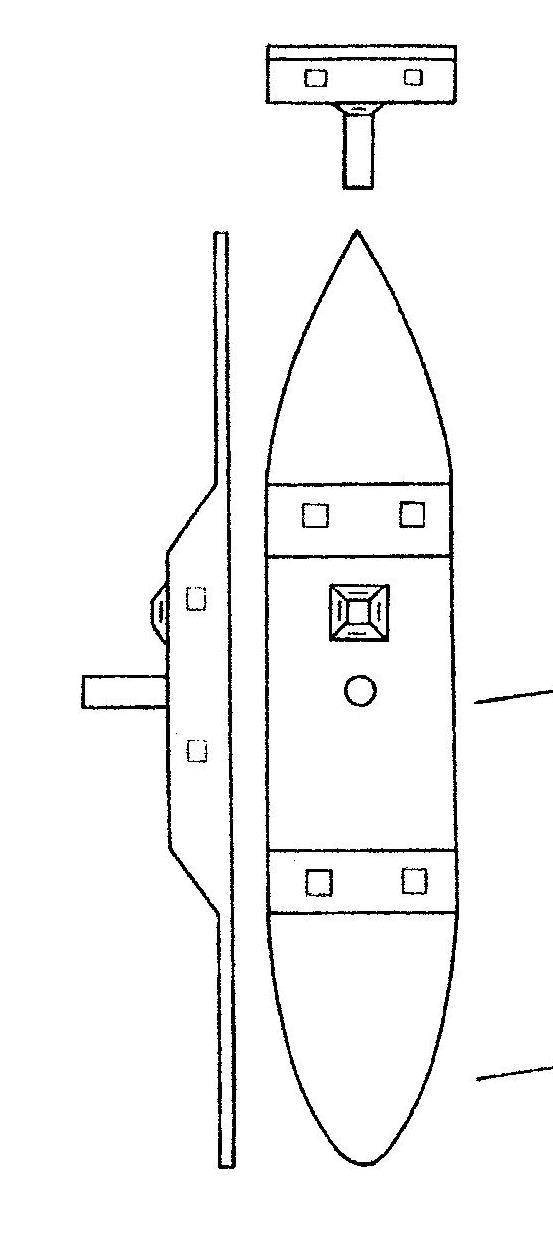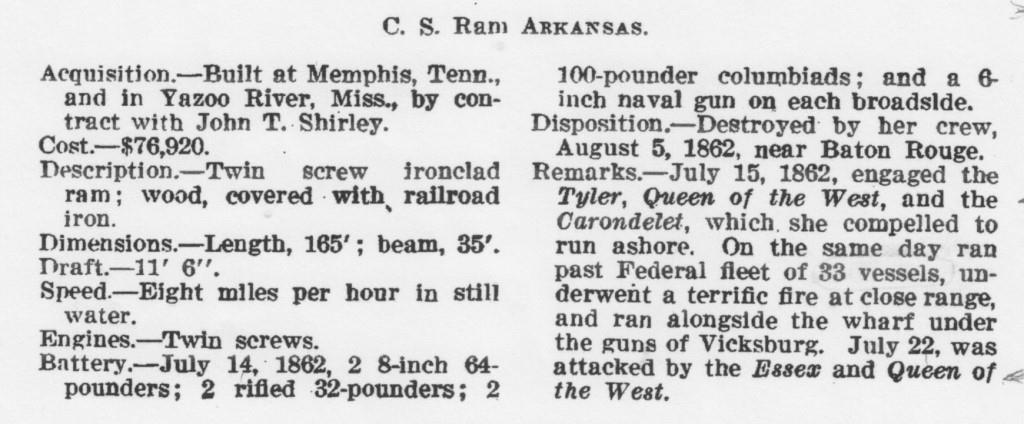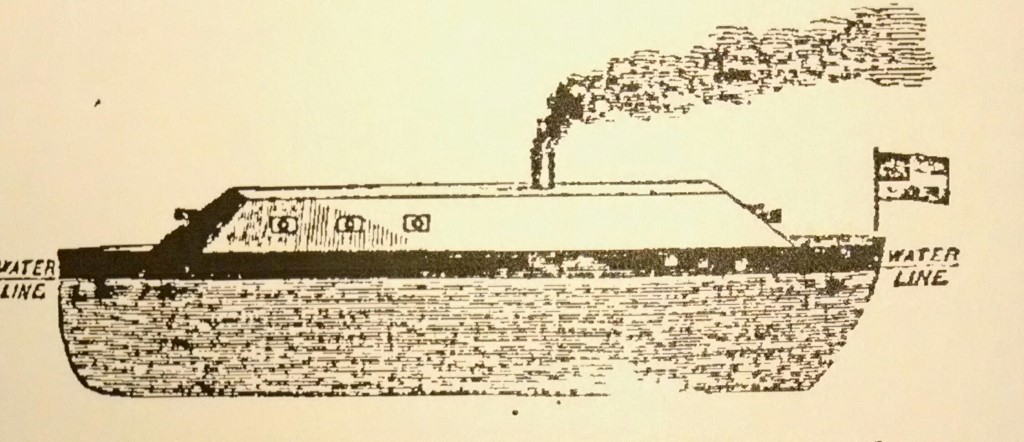|
|
Specifications
Photo: Civil War Vicksburg from across the river. |
|
Official Reports |
||||||
|
Quotes |
||||||
|
|
|
|
| Specifications on
the CSS Ram Arkansas
From Official Records of the Union and Confederate Navies, Ser. 2, Vol. 1, pg. 248.
|
|||||||||||||||||||||||||||||
 |
This drawing is from the book by Roger C. Campbell, Brown Water Navies, pg. 156. It shows views from the side, top, and front of the Arkansas. They are based on original sources, i.e., journals, letters, and reports, because there are no known plans of the boat or photos. The image at the top appears upside down. This is the elevation seen from the front of the boat and shows two gun ports in the front casemate and the boat's one stack (smokestack). The pilot house is the square atop the hurricane (top) deck and the circle below it represents the location of the stack. As the Arkansas had ten guns, three gun ports would have been located on each side of the casemate (rather than two). Though contemporary drawings by Milliken and Scales do not indicate gunport shutters (nor are they mentioned in the majority of sources), these few words were found in Capt. Henry Walke's book* -- "Her port-holes were small, with heavy iron shutters." *See Bibliography. |
||||||||||||||||||||||||||||
 This sketch of a ram is also found in Walke's book (pg. 303). The text describes it thus -- "She was built as a sea-going steamer, of 1200 tons; her ram, like that of her consort [the Tennessee], captured at Memphis, was a sharp cast-iron beak, about three feet deep on her stem, projecting four feet therefrom, and clasping the bow six feet on either side, and bolted through solid timber about ten feet. Her cutwater was heavily iron-shod." In Southern Historical Society Papers, Vol. 12, pg. 119, Gift writes that "A shot [during their passage through the gauntlet] had broken our cast-iron ram." This is added to the sketch -- "Dimensions of the beak or ram of wrought iron bolted on the cutwaters of the Confederate rams built at Memphis. One is now [1877] lying in the Navy Yard, Brooklyn, New York." Note that Walke indicates a cast-iron beak, while the
caption on the sketch indicates wrought iron. The cast iron is most likely
correct. |
|||||||||||||||||||||||||||||
|
In Southern Historical Society Papers, Vol. 12, pg. 119, Gift writes that "A shot [during their passage through the gauntlet] had broken our cast-iron ram." Her ram (her beak) does not show here. It would have protruded forward of the boat, though as of now we are uncertain if it was visible above water.
|
This sketch is from a northern newspaper. Note the depth of the Arkansas' hull under beneath the "water line" -- this is most likely an exaggeration. The specifications at the top of this page give 11' 6" for the draft. However, a draft as much as 13' has been mentioned. The gun box is the structure on the deck -- the cannon are seen at the ports, though the placements of ports is questionable on this drawing. The New York Tribune wrote of 15 Jul 1862, "She ran very slowly by our fleet, but [had] made better time when pursuing the Tyler and Queen in the Yazoo." See also Notes on the Ram in above menu. |
||||||||||||||||||||||||||||
|
Pilots John Hodges Chief Pilot, Yazoo River
pilot *He was the pilot through the gauntlet. In charge of the Arkansas' battery crews
|
|||||||||||||||||||||||||||||
|
Use back button to return.
|
|||||||||||||||||||||||||||||
|
|
|||||||||||||||||||||||||||||
|
|
|||||||||||||||||||||||||||||


